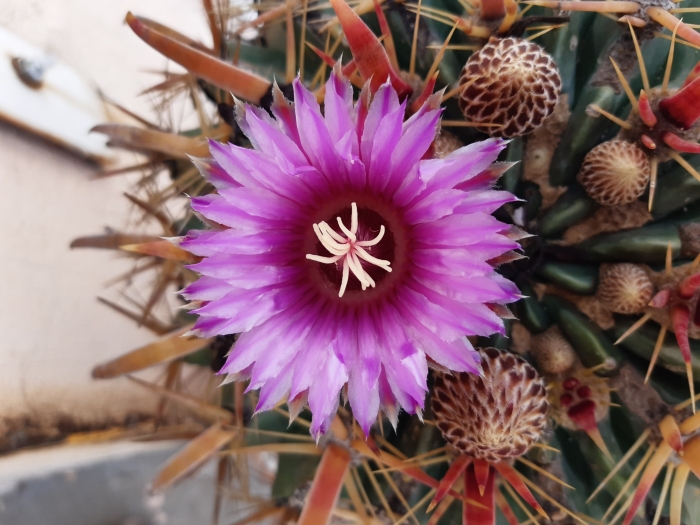Devil’s Tongue Barrel
(Ferocactus latispinus)
Devil’s Tongue Barrel (Ferocactus latispinus)
/
/

© Aarón Misael Carpio Dávila
CC BY 4.0
Image By:
© Aarón Misael Carpio Dávila
Recorded By:
Copyright:
CC BY 4.0
Copyright Notice:
Photo by: © Aarón Misael Carpio Dávila | License Type: CC BY 4.0 | License URL: http://creativecommons.org/licenses/by/4.0/ | Uploader: misael_carpio | Publisher: iNaturalist |

























Estimated Native Range
Summary
Ferocactus latispinus, commonly known as Devil’s Tongue Barrel or Fishhook Cactus, is a slow-growing, evergreen succulent native to the semi-desert regions and scrublands of central and southern Mexico. It thrives in arid environments, often on rocky outcrops, in oak woodlands, and in open grasslands, at elevations between 1969 to 8530 feet (600 to 2600 meters). This barrel cactus typically reaches up to 3 feet in height and 16 inches in diameter, with a globular, light green body featuring 21 pronounced ribs. Its spines, which can range from reddish to white, are long, curved, and particularly striking, giving the plant its common names.
The Devil’s Tongue Barrel is notable for its late autumn to early winter flowering period, when it produces purplish or yellowish funnel-shaped flowers that are quite showy, followed by oval-shaped scaled fruit. The plant is valued in cultivation for its unique form, drought tolerance, and the visual interest provided by its spines and flowers. It is often used in xeriscaping, rock gardens, and as a potted specimen in colder climates. Ferocactus latispinus requires minimal water, well-draining soil, and full sun exposure. While it is hardy to −4°C, it must be protected from prolonged freezing temperatures.CC BY-SA 4.0
The Devil’s Tongue Barrel is notable for its late autumn to early winter flowering period, when it produces purplish or yellowish funnel-shaped flowers that are quite showy, followed by oval-shaped scaled fruit. The plant is valued in cultivation for its unique form, drought tolerance, and the visual interest provided by its spines and flowers. It is often used in xeriscaping, rock gardens, and as a potted specimen in colder climates. Ferocactus latispinus requires minimal water, well-draining soil, and full sun exposure. While it is hardy to −4°C, it must be protected from prolonged freezing temperatures.CC BY-SA 4.0
Plant Description
- Plant Type: Succulent
- Height: 1-1.5 feet
- Width: 1-1.5 feet
- Growth Rate: Slow
- Flower Color: Pink, Purple, Red, Yellow
- Flowering Season: Spring, Summer, Fall
- Leaf Retention: Evergreen
Growth Requirements
- Sun: Full Sun
- Water: Low, Medium
- Drainage: Fast, Medium
Common Uses
Drought Tolerant, Fire Resistant, Low Maintenance, Potted Plant, Rock Garden, Showy Flowers
Natural Habitat
Semi-desert regions and scrublands in central and southern Mexico, often on rocky outcrops, in oak woodlands, and in open grasslands
Other Names
Common Names: Devil’s Tongue Barrel, Wide-Spine Barrel, Crow’s Claw Cactus
Scientific Names: , Ferocactus latispinus, Cactus multiangularis, Cactus multiangularis, Echinocactus cornigerus var. latispinus, Echinocactus recurvus var. tricuspidatus, Echinofossulocactus cornigerus var. angustispinus, Echinofossulocactus cornigerus var. elatior, Echinofossulocactus cornigerus var. rubrospinus, Melocactus besleri-affinis,
GBIF Accepted Name: